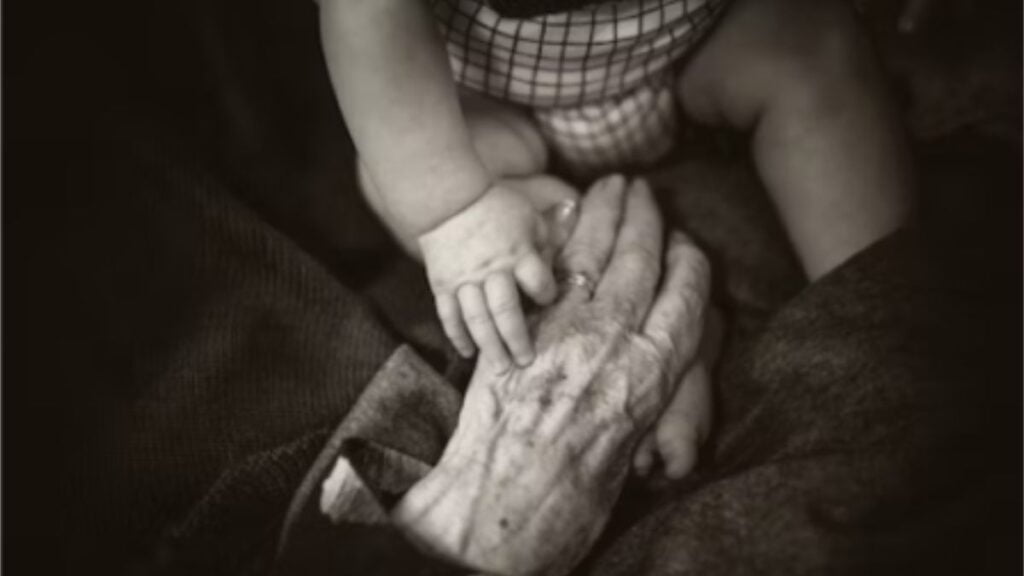Introduction
“Safeguarding Kids: Discussing Good Touch and Bad Touch”

Childhood is a precious time when children learn, grow, and explore the world around them. As parents and caregivers, it is our responsibility to create a safe environment for our children, both physically and emotionally. One critical aspect of childhood safety is teaching children about the concepts of good touch and bad touch. In this article, we will explore why these conversations are essential, how to approach them, and strategies to ensure your child’s safety.
What is the importance of discussing good touch and bad touch with children?
Discussing good touch and bad touch with children is crucial for several reasons:
- Empowerment: Teaching children about good touch and bad touch empowers them to recognize and assert boundaries. It gives them the language and understanding to communicate if they feel uncomfortable or unsafe in any situation.
- Prevention of Abuse: It helps children understand what is appropriate and what is not, reducing the likelihood of them becoming victims of abuse. Children who are aware of what constitutes inappropriate behavior are more likely to report it.
- Early Intervention: By having open conversations about good and bad touch, adults can identify signs of abuse early and intervene to protect the child from further harm.
- Trust and Communication: It fosters an environment of trust and open communication between children and caregivers. Children feel comfortable coming forward with concerns or questions, knowing they will be listened to and supported.
- Normalization of Discussion: By making discussions about good touch and bad touch a normal part of conversations about safety and well-being, children are more likely to feel comfortable discussing these topics and seeking help if needed.
- Education about Consent: It lays the foundation for understanding consent and personal boundaries, which is essential as children grow older and navigate relationships with peers and adults.
What are the types of bad touch?
“Bad touch” is a term used to describe inappropriate physical contact, especially in the context of child safety and sexual abuse prevention. It’s important to teach children about different types of bad touches so they can recognize when they are in uncomfortable or potentially dangerous situations. Here are some common types of bad touches:

- Unwanted Touching: Any touch that makes a person feel uncomfortable, scared, or violated can be considered a bad touch. This can include touching of the private parts (genitalia or breasts) or any other part of the body when it’s unwanted.
- Forced Touching: This involves someone physically making another person touch their own or someone else’s private parts against their will.
- Invasive Touching: Invasive touches can involve the use of force or threats to gain access to private areas of the body or clothing.
- Secret Touching: When someone tells a child to keep a physical touch a secret, this is a red flag. Adults should not ask children to keep secrets about physical contact.
- Touching Under the Clothing: Touching under the clothing in a private area is almost always inappropriate, especially if it is not for a legitimate medical reason (and even then, it should be done by a trusted medical professional).
- Touching Over the Clothing: Even touching over clothing can be bad if it is unwelcome and makes the person feel uncomfortable or threatened.
- Non-consensual Hugging or Kissing: While hugging and kissing can be expressions of affection, they should always be consensual. If someone is forced or pressured into hugging or kissing when they don’t want to, it’s considered a bad touch.
- Tickling: Tickling can be innocent fun, but it should stop when the person being tickled asks for it to stop. Continued tickling after someone says “no” or “stop” can be considered a bad touch.
- Digital Penetration: This involves the use of fingers or hands to penetrate the mouth, anus, or vagina. This is never appropriate without consent and, in most cases, is illegal.
- Any Touching that Feels Wrong: It’s important to teach children that if a touch feels wrong or makes them uncomfortable, they should speak up and tell a trusted adult.
How can parents teach children about consent in the context of touch?
Teaching children about consent in the context of touch is crucial for their understanding of boundaries, respect, and personal autonomy. Here are some ways parents can approach this topic:
- Start Early: Begin teaching about consent from a young age. Use simple language and age-appropriate examples to help them understand the concept.
- Model Consent: Model consent in your own interactions with your child. Always ask for their consent before hugging, kissing, or touching them, and respect their response, whether it’s a yes or a no.
- Use Body Safety Rules: Teach children about body safety rules, such as the idea that their body belongs to them and they have the right to say no to any touch that makes them uncomfortable. Reinforce the message that they should respect others’ boundaries too.
- Role-play Scenarios: Role-play different scenarios with your child to help them practice asking for and giving consent in various situations. This can include scenarios like asking for a hug from a friend or asking permission before touching a pet.
- Teach About Boundaries: Help children understand that everyone has different boundaries when it comes to touch, and it’s important to respect those boundaries. Encourage them to pay attention to verbal and non-verbal cues to determine if someone is comfortable with the touch.
- Use Books and Media: Utilize books, videos, and other media that discuss consent and boundaries in an age-appropriate manner. This can provide additional reinforcement and help reinforce the lessons you’re teaching.
- Encourage Open Communication: Create an environment where your child feels comfortable coming to you with questions or concerns about touch and boundaries. Let them know they can always talk to you if they feel uncomfortable or confused about something.
- Discuss Real-life Examples: Use real-life examples from the news or personal experiences (if appropriate) to discuss issues related to consent and boundaries. This can help reinforce the importance of understanding and respecting boundaries in all types of relationships.
By incorporating these strategies into their parenting approach, parents can effectively teach their children about consent in the context of touch, setting them up with important skills for navigating relationships and interactions throughout their lives.
At what age should parents start discussing this topic with their children?
Parents can start discussing the topic of consent and boundaries with their children from a very young age. While the depth and complexity of these discussions will naturally evolve as children grow older, laying the foundation early on is important. Here’s a general guideline:
- Preschool Age (2-5 years old):
- Introduce basic concepts of consent in simple terms, such as teaching them that they have the right to say “no” if they don’t want to be hugged or kissed.
- Reinforce the idea that their body belongs to them and they have control over who touches them.
- Early Childhood (6-10 years old):
- Expand on the concepts of consent and boundaries, using age-appropriate language and examples.
- Discuss different types of touch and help them understand what feels comfortable or uncomfortable to them.
- Teach them to recognize and respect others’ boundaries as well.
- Pre-adolescence (11-12 years old):
- Deepen discussions about consent, emphasizing the importance of clear communication and respect in all relationships.
- Talk about issues like peer pressure, online safety, and the importance of seeking help if they feel uncomfortable or threatened.
- Adolescence (13+ years old):
- Discuss more complex issues related to consent, such as the influence of alcohol and drugs on decision-making, sexual consent, and navigating romantic relationships.
- Emphasize the importance of enthusiastic consent and understanding the legal and emotional consequences of violating someone’s boundaries.
While these age ranges provide a general framework, it’s important for parents to adapt their approach based on their child’s individual maturity level, temperament, and life experiences. Additionally, these discussions should be ongoing and evolve over time as children grow and their understanding of consent deepens. Starting early and maintaining open communication sets the stage for healthy relationships and personal boundaries throughout their lives.
Conclusion
Discussing good touch and bad touch with your child is a vital aspect of their safety and well-being. It empowers them to protect themselves and builds a foundation of trust in your relationship. By approaching this conversation with sensitivity and using age-appropriate language, you can provide your child with the tools they need to navigate the world safely. Remember that ongoing communication and education are key to ensuring your child’s safety and helping them grow into confident and informed individuals.
References:
- American Academy of Pediatrics. (2018). Talking to Children About Sexual Abuse. HealthyChildren.org. Link
- National Society for the Prevention of Cruelty to Children (NSPCC). (n.d.). Talking to your child about staying safe from sexual abuse. NSPCC.org.uk. Link
- KidsHealth from Nemours. (2022). Teaching Kids About Consent. KidsHealth.org. Link
- American Psychological Association. (n.d.). Talking to your child about consent. APA.org. Link
FAQS
- How can parents initiate conversations about good touch and bad touch?
- Parents can use books, videos, or everyday situations as prompts to discuss this topic. It’s essential to create an open, non-judgmental environment where children feel comfortable asking questions and expressing concerns.
- What are some signs that a child might be experiencing inappropriate touch?
- Signs can vary depending on the child’s age and personality, but common indicators include sudden changes in behavior, reluctance to be around certain individuals, unexplained injuries, or displaying knowledge of sexual behaviors beyond their developmental stage.







